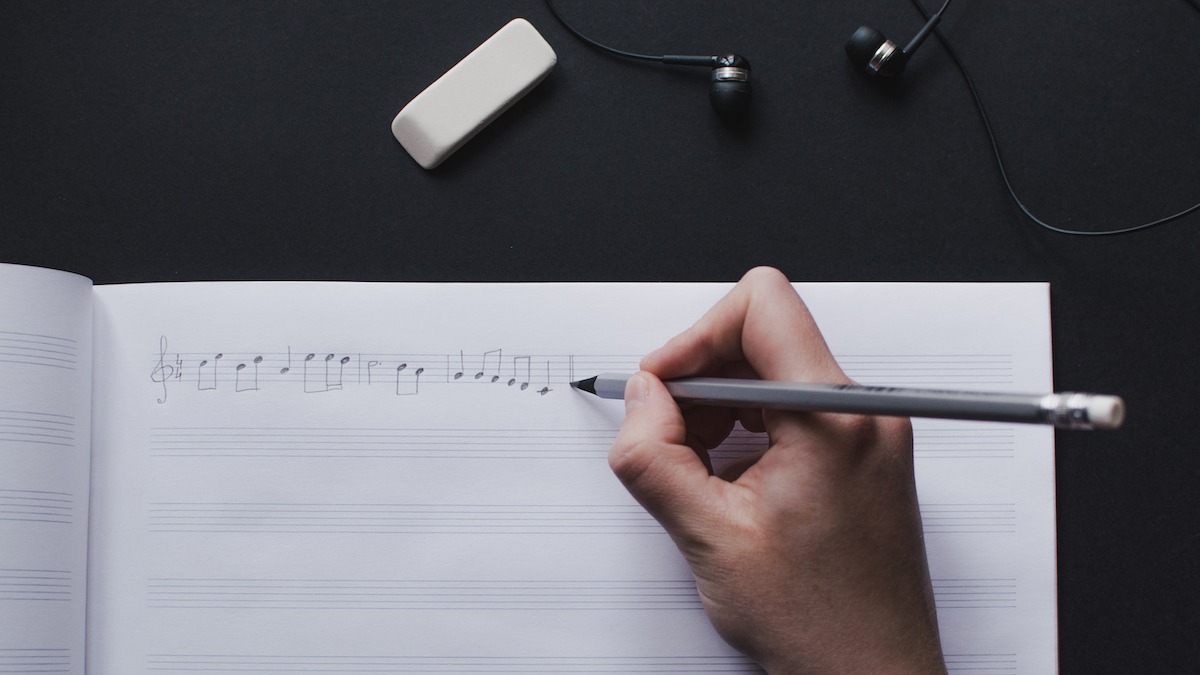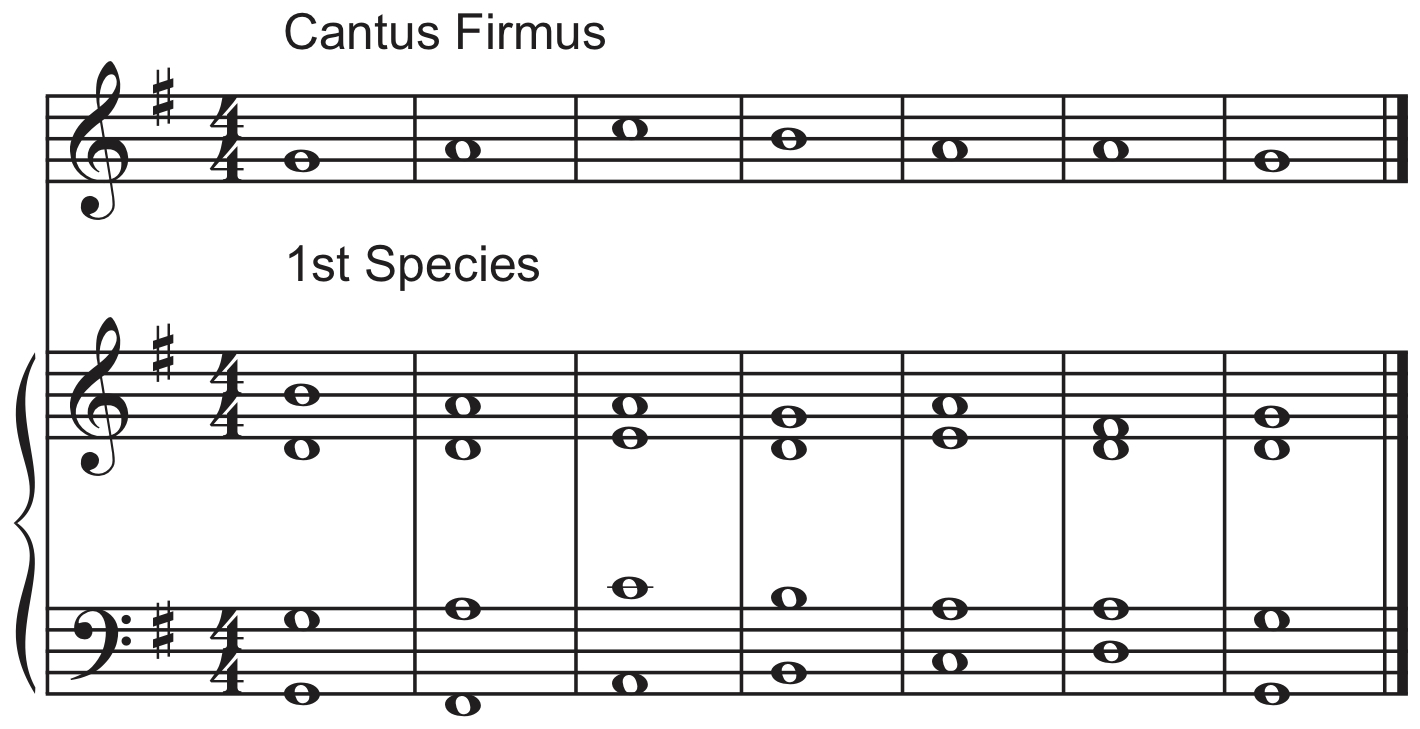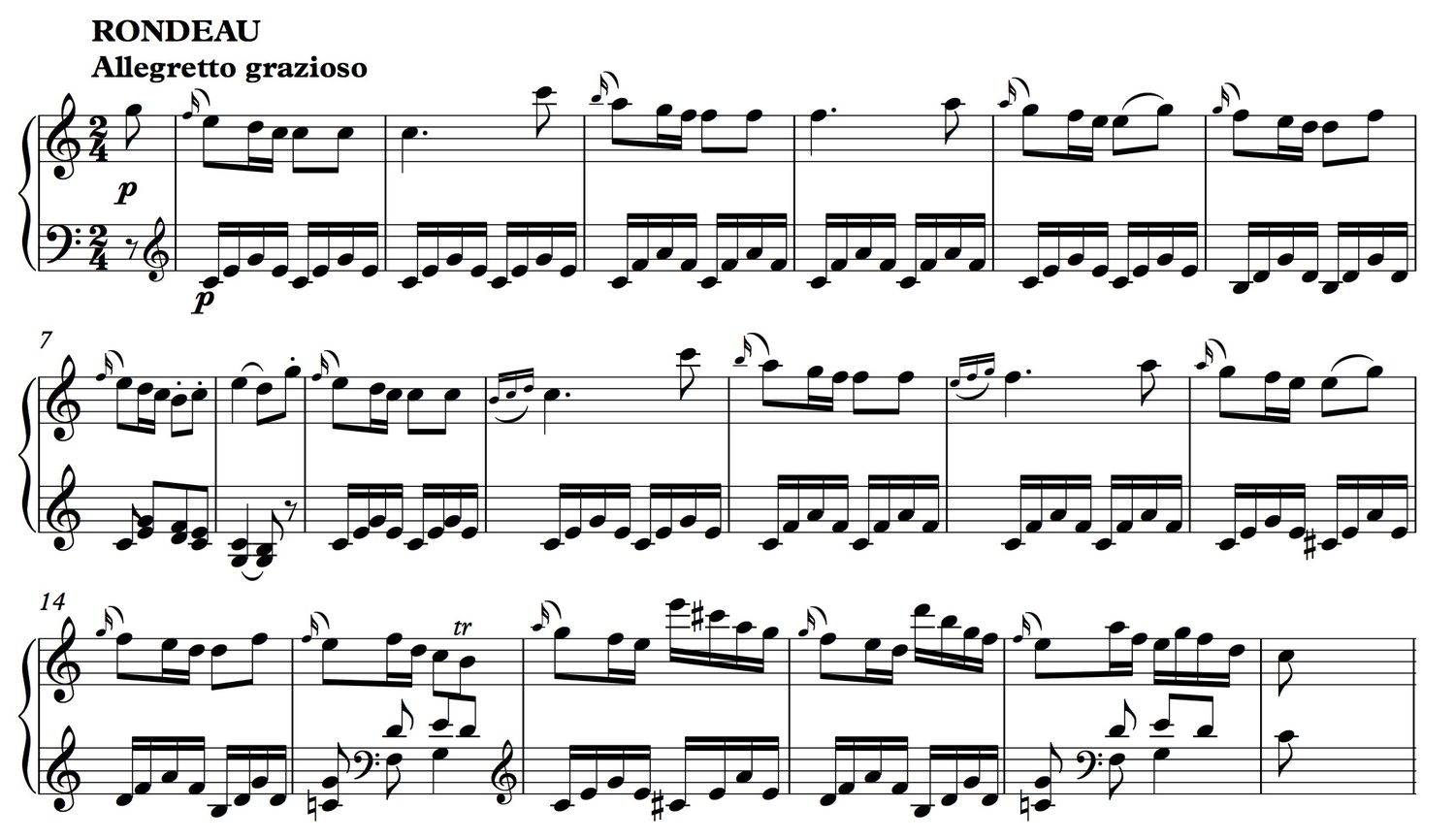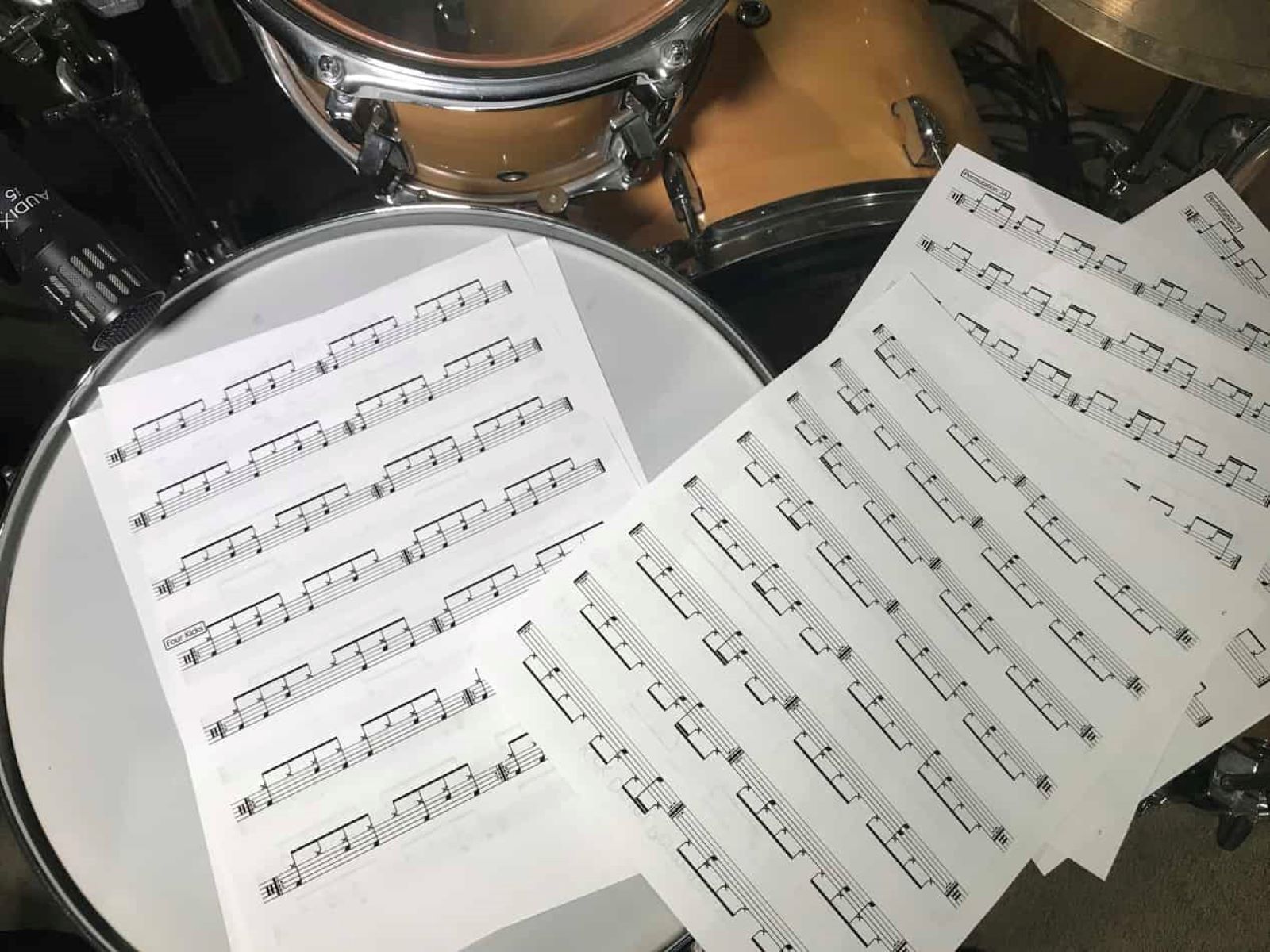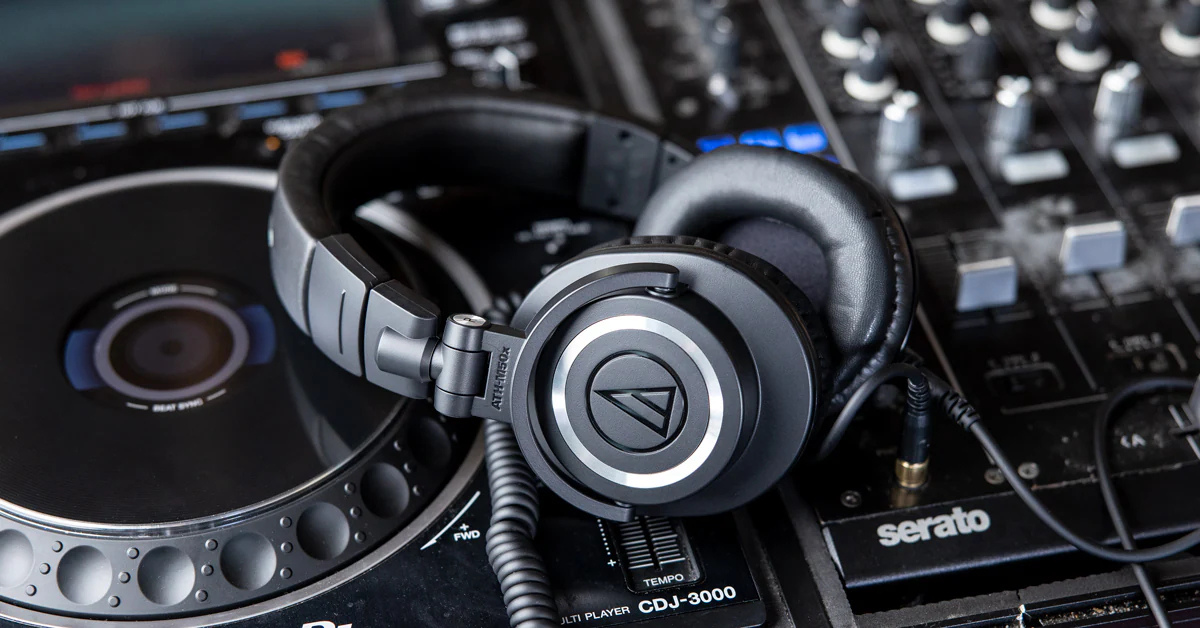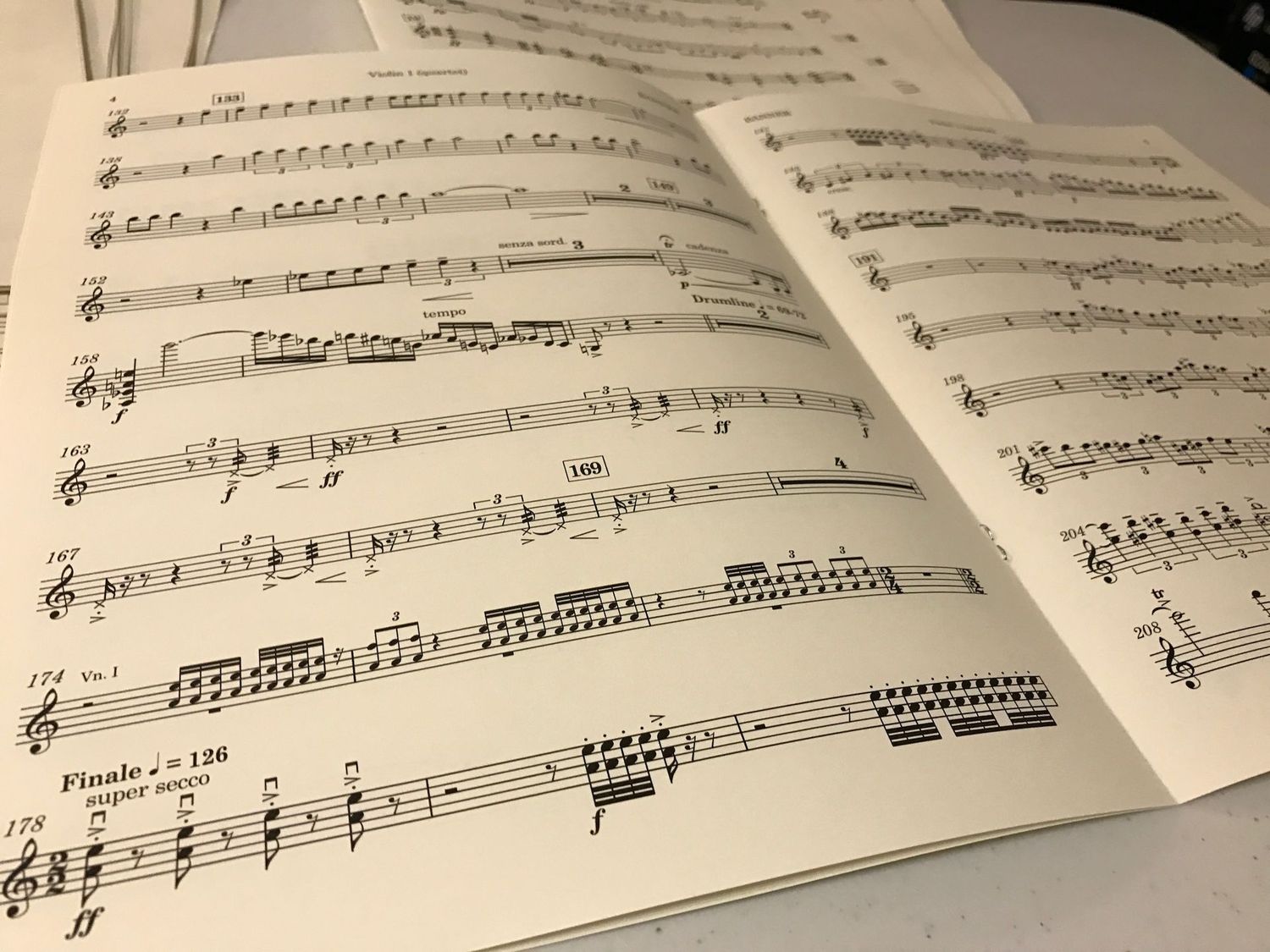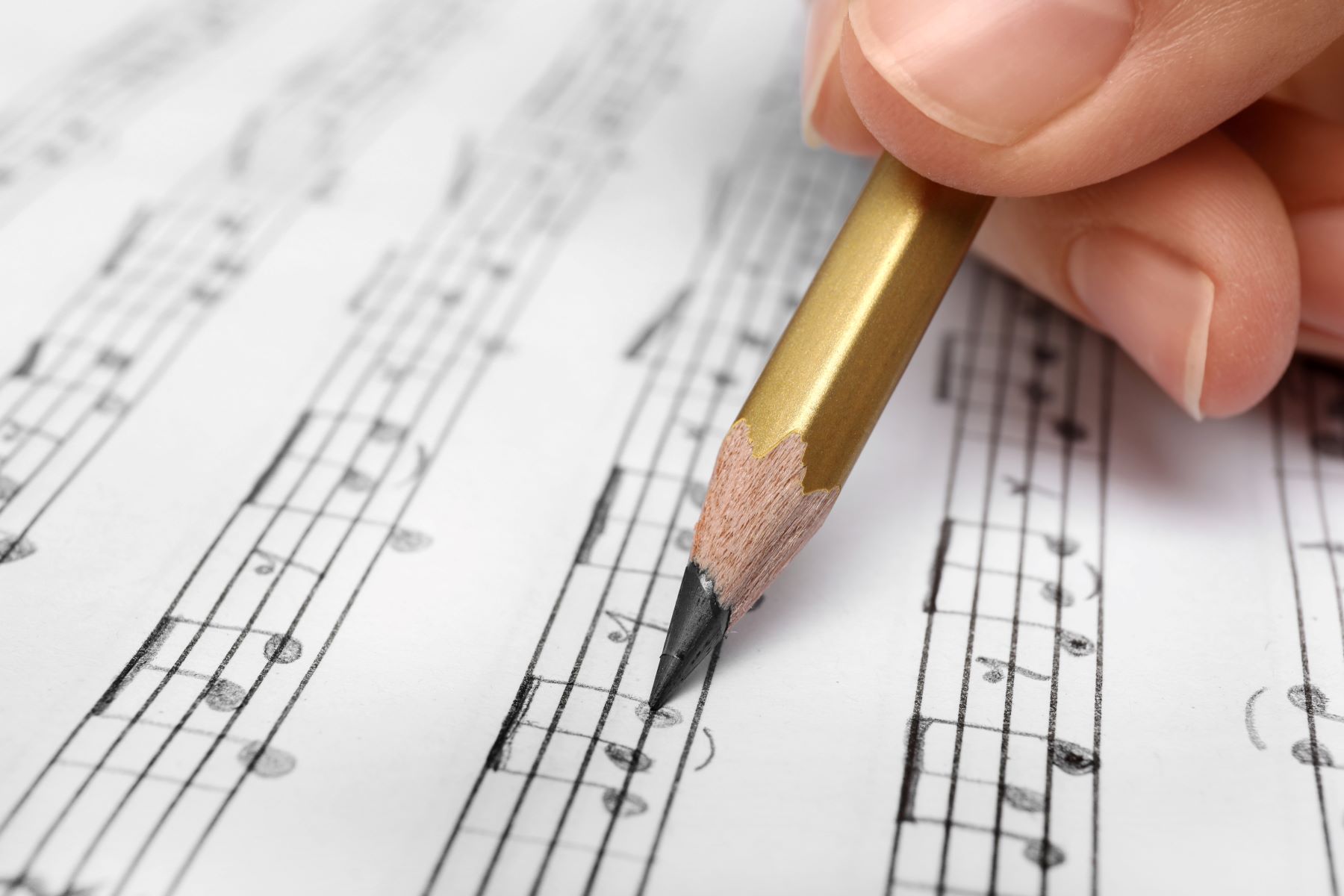

Jazz
How To Write Jazz Music
Modified: January 22, 2024
Learn how to write captivating jazz music with our comprehensive guide. Master the art of improvisation, explore different jazz styles, and create your own musical arrangements.
(Many of the links in this article redirect to a specific reviewed product. Your purchase of these products through affiliate links helps to generate commission for AudioLover.com, at no extra cost. Learn more)
Table of Contents
Introduction
Welcome to the world of jazz music, where rhythmic prowess, melodic improvisation, and soulful expressions intertwine to create a unique and captivating art form. From the early days of the blues-infused New Orleans sound to the complex and avant-garde compositions of modern jazz, this genre has evolved and influenced countless musicians around the globe.
Writing jazz music requires a deep understanding of its rich history and distinctive characteristics. It is a genre that celebrates individuality, encourages improvisation, and embraces a wide range of musical expressions. Whether you are a seasoned musician or a budding songwriter, this comprehensive guide will help you navigate the fascinating world of jazz composition.
In this article, we will explore the essential elements of jazz music and discuss how to incorporate them into your own compositions. We will delve into topics such as melody and chord progressions, rhythm and tempo, improvisation techniques, instrumentation, writing jazz arrangements, analyzing jazz standards, and even tips for writing lyrics in jazz music.
By gaining a thorough understanding of these aspects, you will be able to infuse your compositions with the genuine essence of jazz. So, get ready to embark on a musical journey that will enable you to channel your creativity and dive into the world of this timeless and vibrant genre.
Understanding the Elements of Jazz Music
Jazz music is characterized by its unique blend of syncopated rhythms, complex harmonies, and improvisational nature. To effectively write jazz music, it is vital to have a solid understanding of the key elements that define this genre.
Melody and Chord Progressions:
The melody in jazz music is often intricate, expressive, and ornamented. It is common to find melodic lines that incorporate elements of blues scales, chromaticism, and swing rhythms. Jazz musicians also explore various chord progressions, often utilizing extended chords, such as seventh, ninth, and eleventh chords, to create rich and colorful harmonies.
Rhythm and Tempo:
Jazz music is renowned for its rhythmic complexity and syncopation. Swing rhythms, characterized by a lilt or bounce, are prevalent in jazz compositions. Additionally, jazz musicians experiment with various tempos, ranging from slow and ballad-like to fast and energetic, allowing for dynamic and expressive performances.
Improvisation Techniques:
One of the defining features of jazz music is improvisation. Jazz musicians have the liberty to express their creativity through spontaneous and on-the-spot musical inventions. Improvisation in jazz can involve melodic elaborations, harmonic substitutions, and rhythmic variations. By mastering improvisation techniques, you can add personal and unique elements to your jazz compositions.
Instrumentation in Jazz Music:
Jazz music is often performed by ensembles, allowing for intricate interplay and ensemble improvisation. Common instruments in jazz include the saxophone, trumpet, piano, double bass, and drums. The specific instrumentation chosen can greatly impact the overall sound and mood of a jazz composition.
Writing jazz music involves understanding the unique role of each instrument, utilizing the strengths of the players, and creating arrangements that highlight the interplay between the instruments.
By grasping the essential elements of jazz music – melody, chord progressions, rhythm, improvisation, and instrumentation – you will be equipped with the tools needed to create authentic and engaging jazz compositions. Building on this foundation, we will explore further aspects of jazz composition, including writing jazz arrangements, analyzing jazz standards, incorporating different jazz styles and subgenres, and tips for writing lyrics in jazz music.
Melody and Chord Progressions
When it comes to writing jazz music, the melody and chord progressions play a pivotal role. The melody serves as the focal point, while the chord progressions provide the harmonic framework for the composition. Understanding how these elements work together is essential for creating captivating and authentic jazz compositions.
In jazz, melodies are often characterized by their expressive nature and intricate ornamentation. They can incorporate elements of blues scales, chromaticism, and swing rhythms, adding depth and complexity to the composition. Jazz melodies are known for their improvisational qualities, allowing the performer to add their unique touch and interpretation.
Chord progressions in jazz music are harmonically rich and versatile. Traditional jazz progressions often include dominant seventh chords, ii-V-I progressions, and chromatic passing chords. Extended and altered chords, such as ninth, eleventh, and thirteenth chords, are frequently used to add color and tension to the harmony.
Understanding the principles of harmony and chord construction is crucial for writing compelling chord progressions in jazz. Experimenting with different voicings and inversions adds variety and depth to your compositions. Additionally, exploring harmonic substitutions and reharmonizations can lead to exciting and unexpected chord progressions.
One effective approach to writing jazz melodies and chord progressions is to start with a strong melodic idea and build the harmonies around it. Experiment with different scales, intervals, and chord progressions to find melodic phrases that resonate with the emotional core of your composition. Consider incorporating rhythmic variation, syncopation, and stylistic devices such as call and response or motivic development to enhance the melodic and harmonic aspects of your jazz composition.
Listening to and studying the works of jazz legends can provide invaluable inspiration and guidance. Analyze the melodies and chord progressions of classic jazz standards, and examine how renowned jazz musicians have utilized these elements in their compositions. Take note of their melodic choices, harmonic movements, and improvisational approaches, and use these insights to inform your own music-writing process.
Ultimately, melody and chord progressions are at the core of jazz composition. By understanding the intricacies of these elements and infusing your compositions with your unique musical voice, you can create captivating and emotive jazz music that resonates with both musicians and audiences alike.
Rhythm and Tempo
Rhythm is the heartbeat of jazz music, driving its infectious energy and propelling the performances forward. Mastery of rhythm and a deep understanding of tempo are essential for creating dynamic and engaging jazz compositions.
In jazz, rhythm is often characterized by its syncopation and swinging feel. Swing rhythms, with their offbeat accents and uneven divisions of time, create a distinctive groove that is synonymous with the genre. It is important to internalize the swing feel and develop a sense of rhythmic interplay, allowing for expressive and spirited performances.
Tempo, or the speed at which a piece of music is played, greatly influences the mood and energy of a jazz composition. Jazz music spans a wide range of tempos, from slow ballads to fast-paced bebop tunes. The tempo you choose can evoke different emotions and set the stage for the improvisations and interactions to come.
When writing jazz music, it is important to consider the relationship between rhythm and tempo. Experiment with different rhythmic patterns and syncopated accents to add interest and complexity to your compositions. Varying the tempo throughout a piece can also create a sense of tension and release, keeping the music engaging and dynamic.
Syncopation is a key element in jazz rhythm and can be achieved by accenting offbeats, adding unexpected rests, or playing melodies and chords slightly ahead or behind the beat. This rhythmic complexity adds depth and excitement to jazz compositions.
Developing a strong sense of timekeeping is essential for jazz musicians and composers. Practicing with a metronome or rhythm exercises can help improve your internal sense of rhythm, allowing you to effectively communicate the desired groove and feel in your compositions. It is also beneficial to listen to and study recordings of jazz greats to absorb their rhythmic nuances and techniques.
Collaboration and interaction among musicians are fundamental to jazz music. When writing for a jazz ensemble, consider the interplay between different instruments and the rhythm section. Leave space for improvisation and allow the rhythm section to establish and maintain the rhythmic foundation.
By harnessing the power of rhythm and understanding the impact of tempo, you can create jazz compositions that engage listeners and inspire musicians to experiment and improvise. The rhythmic and temporal elements of jazz music bring life and energy to your compositions, shaping the unique character of the genre.
Improvisation Techniques
One of the defining features of jazz music is improvisation. Jazz musicians have the freedom to spontaneously create and explore new musical ideas, making each performance unique and captivating. Understanding improvisation techniques is crucial for composing and arranging jazz music.
Improvisation in jazz is not about randomly playing notes but rather a skill that requires a combination of musical knowledge, technical ability, and creativity. It involves spontaneously constructing melodies, harmonies, and rhythms that fit within the context of the composition.
One of the most fundamental techniques in jazz improvisation is understanding and utilizing scales and modes. Familiarize yourself with the major and minor scales, as well as modes such as the Dorian, Mixolydian, and Lydian scales, to provide a melodic framework for your improvisations. Experiment with different scales and modes over different chord progressions to discover interesting and unique sounds.
Another essential concept in jazz improvisation is chord-scale relationships. Each chord in a progression has a corresponding scale or set of scales that can be used to create melodic lines. Understanding these relationships allows you to choose scales that harmonically match the chords and create melodic tension and release. This knowledge is crucial for creating compelling and cohesive improvisations.
Rhythmic variation and syncopation are also key elements in jazz improvisation. Experiment with playing notes ahead of or behind the beat, adding offbeat accents, and using different rhythmic patterns to inject energy and interest into your improvisations. This rhythmic flexibility and experimentation give jazz music its distinctive flair.
Listening to and transcribing solos by renowned jazz musicians is an effective way to learn improvisation techniques. Analyze their melodic choices, note choices, and phrasing. Pay attention to their use of space and dynamics, as these elements contribute to the overall musicality of an improvisation. Incorporate what you learn into your own playing and compositions, adapting and developing your unique voice in the process.
Developing a strong ear for harmony and melodic motifs is also crucial for improvisation. Train your ear to recognize chord progressions, chord qualities, and melodic patterns. This will enable you to effortlessly navigate the changes and construct melodies that suit the harmonic context.
Ultimately, improvisation is about expressing your individuality and musical voice. Embrace mistakes and unexpected surprises, as they can lead to new and exciting musical ideas. The more you practice and immerse yourself in the language of jazz improvisation, the more confident and proficient you will become in creating captivating jazz compositions.
Instrumentation in Jazz Music
Instrumentation plays a crucial role in jazz music, shaping its sound and texture. The choice of instruments in a jazz ensemble greatly influences the overall mood, dynamics, and interplay of the composition. Understanding the different instruments and their roles is essential for writing effective jazz arrangements.
Common instruments found in jazz ensembles include the saxophone, trumpet, piano, double bass, and drums. Each instrument brings its unique timbre and playing techniques to the ensemble, contributing to the rich and diverse sound of jazz music.
The saxophone is a prominent instrument in jazz, known for its versatility and expressive capabilities. From the soaring melodies of the alto sax to the soulful tones of the tenor sax, it adds a distinct voice to jazz compositions.
The trumpet is another essential instrument in jazz, renowned for its powerful and bright sound. It is often used for melodic improvisation, adding soaring and virtuosic lines to jazz compositions.
The piano serves as a foundation and harmonic guide in jazz ensembles. Its ability to play chords and melodic lines simultaneously makes it an indispensable instrument for comping (accompanying) and soloing.
The double bass, also known as the upright bass, provides the low-end foundation in jazz music. Its deep and resonant sound adds richness to the ensemble, laying down the rhythmic and harmonic foundation.
The drums are the heartbeat of jazz, providing the intricate rhythms and driving force behind the music. The drummer sets the tempo, establishes the groove, and interacts dynamically with fellow musicians, contributing to the overall energy and dynamics of the composition.
When writing jazz compositions, it is important to consider the strengths and capabilities of each instrument. Give each instrument its moment to shine by allowing for solos and showcasing their unique qualities.
Consider the interplay between instruments, especially in ensemble sections. Explore the possibilities of call and response between instruments, creating dialogues and interactions that elevate the music.
Experiment with different instrument combinations to achieve the desired sonic palette. A small ensemble, like a quartet or quintet, allows for intimate and intricate interactions, while a larger ensemble, such as a big band, provides a rich and powerful sound.
Understanding the role of each instrument and how they interact within an ensemble is vital for writing effective jazz arrangements. By utilizing the strengths of each instrument and creating arrangements that allow for expressive solos and cohesive interplay, you can create jazz compositions that captivate and engage listeners.
Writing Jazz Arrangements
Arranging jazz compositions involves taking a basic melody or chord progression and transforming it into a full arrangement for a jazz ensemble. This process allows for creative expression and adds depth and complexity to the original composition. To write effective jazz arrangements, consider the following techniques:
1. Explore Harmonic Possibilities: Experiment with different chord voicings, inversions, and extensions to create interesting and colorful harmonies. Consider using substitution chords, passing chords, and reharmonizations to add depth and tension to the arrangement.
2. Think About Dynamics: Jazz arrangements thrive on the contrast between different sections and dynamics. Incorporate crescendos, decrescendos, and varying levels of intensity to create a dynamic arc throughout the arrangement. Use dynamics to highlight solos or certain sections of the composition.
3. Create Contrast: Vary the texture and instrumentation throughout the arrangement. Utilize moments of sparse instrumentation versus full ensemble sections to create contrast and keep the listener engaged. Experiment with the use of call and response, counterpoint, and rhythmic interplay between instruments for added interest.
4. Allow Room for Improvisation: Jazz is inherently an improvisational art form. Leave space in your arrangement for musicians to take solos and express their creativity through improvisation. Consider adding written-out backgrounds or accompaniment figures to support the solos and add depth to the arrangement.
5. Consider Form and Structure: Determine the overall form of your arrangement, such as AABA, ABAC, or other popular jazz song structures. Plan how you will introduce and develop the melody, where solos will be featured, and how the arrangement will conclude. Use reprises, segues, and intros to create a coherent and well-structured composition.
6. Utilize Instrumental Colors: Take advantage of the unique timbre and capabilities of each instrument in the ensemble. Experiment with different instrumental combinations and give each instrument its moment to shine. Consider using instrument-specific techniques, such as growling on a trumpet or utilizing extended techniques on a saxophone, to add variety and interest to the arrangement.
7. Balance Complexity and Clarity: Jazz arrangements can be complex, but it’s essential to maintain clarity. Ensure that the individual parts within the arrangement are playable and readable for the performers. Balance intricate harmonies and rhythms with the overall musicality and accessibility of the piece.
By incorporating these techniques, you can create engaging and captivating jazz arrangements. Whether you’re arranging a jazz standard or creating an original composition, embracing the art of arranging allows you to take your music to new heights and bring your compositions to life through the unique lens of jazz.
Analyzing and Studying Jazz Standards
Jazz standards form the backbone of the jazz repertoire and serve as a rich source of inspiration for composers and arrangers. Analyzing and studying these timeless compositions provides invaluable insights into the underlying structures, harmonic progressions, and improvisational possibilities within jazz music.
When analyzing a jazz standard, start by examining its form and structure. Common forms include the 32-bar AABA, the 12-bar blues, and the 16-bar tune. Understanding the song’s structure helps you identify key sections, such as the melody, chorus, and bridge, which then inform your arrangement or composition.
Next, delve into the harmonic progression of the piece. Identify the key centers and analyze the chord progressions within each section. Pay attention to any chromatic or altered chords, dominant substitutions, and secondary dominants that create tension and provide opportunities for melodic improvisation.
Using lead sheets or transcriptions, study the melodies and motifs of jazz standards. Analyze the use of scales, passing tones, and rhythmic motifs within the melodic lines. Pay attention to the phrasing, articulation, and dynamics used by renowned jazz musicians in their performances.
Listening to various recordings of the same jazz standard can offer different interpretations and perspectives. Study the performances of jazz legends and contemporary artists to gain a deeper understanding of the possibilities for melodic interpretation, rhythmic variations, and harmonic explorations.
Transcribing solos and analyzing improvisational techniques used by jazz musicians in these recordings is also immensely valuable. Study their note choices, rhythmic approaches, and use of melodic development to enhance your own improvisational skills and expand your musical vocabulary.
By studying and analyzing jazz standards, you develop a greater appreciation for the intricacies of jazz music and gain insights into the compositional and improvisational techniques used by the masters of the genre. This knowledge serves as a foundation for your own jazz compositions and arrangements, allowing you to incorporate the essence and style of jazz into your own musical creations.
Incorporating Jazz Styles and Subgenres
Jazz is a genre that has evolved and branched out into various styles and subgenres throughout its rich history. Incorporating different jazz styles into your compositions can add depth, diversity, and an exciting twist to your music. Here are some key jazz styles and subgenres to explore:
1. Swing: Swing jazz is characterized by its steady rhythm, medium to fast tempos, and a distinctive “lilting” feel. Incorporate swing rhythms, walking basslines, and call and response patterns to capture the essence of this classic jazz style.
2. Bebop: Bebop emerged in the 1940s as a reaction against the constraints of swing music. It is characterized by fast tempos, complex harmonies, and intricate melodic improvisations. Study the bebop language and incorporate fast, intricate lines and unconventional harmonies into your compositions.
3. Cool Jazz: Cool jazz emerged in the late 1940s and 1950s as a reaction to the high-energy bebop style. Cool jazz features slower tempos, relaxed and introspective moods, and a focus on lyrical melodies. Experiment with lush chord voicings, smooth melodic lines, and spacious arrangements that evoke the cool jazz aesthetic.
4. Modal Jazz: Modal jazz, popularized by musicians like Miles Davis and John Coltrane, emphasizes the use of modes rather than traditional chord progressions. Incorporate modal concepts, such as extended vamps and ostinato patterns, to create an open and exploratory sound in your compositions.
5. Fusion: Fusion combines elements of jazz with other genres like rock, funk, and R&B. Incorporate elements of electric instruments, funk-infused rhythms, and improvisations over more contemporary chord progressions to explore the boundaries of jazz fusion in your compositions.
6. Latin Jazz: Latin jazz infuses traditional jazz with Latin American rhythms and influences. Incorporate elements such as clave rhythms, montunos, and Afro-Cuban percussion instruments to create a vibrant and rhythmic Latin jazz sound.
7. Free Jazz: Free jazz pushes the boundaries of traditional jazz, focusing on improvisational freedom and exploration. Experiment with unconventional harmonic structures, extended improvisations, and non-traditional instrumentations to push the boundaries of your compositions.
8. Contemporary Jazz: Contemporary jazz incorporates elements of various styles and genres while maintaining a jazz foundation. Experiment with incorporating elements from other contemporary genres, such as electronic music or hip-hop, to add a modern and innovative touch to your compositions.
By exploring and incorporating different jazz styles and subgenres into your compositions, you can showcase your versatility as a composer and infuse your music with a broader range of emotions, rhythmic possibilities, and harmonic textures. Embrace the diversity of jazz and let it inspire you to create fresh and exciting compositions that honor the rich tradition while pushing the boundaries of the genre.
Tips for Writing Lyrics in Jazz Music
Writing lyrics in jazz music requires a unique blend of poetic sensibility, storytelling, and rhythmic phrasing. It is an art form that embraces both the freedom of improvisation and the structured nature of jazz compositions. Here are some tips to help you craft compelling lyrics for jazz music:
1. Embrace the Language of Jazz: Jazz music has its own vocabulary and style. Familiarize yourself with the lyrical themes commonly found in jazz, such as love, longing, introspection, and societal issues. Draw inspiration from the poetic and evocative language used in jazz standards to capture the essence of the genre.
2. Rhythmic Phrasing: Jazz music is characterized by its syncopated rhythms and swing feel. Pay attention to the natural rhythm of the melody and create lyrics that complement the groove and flow of the music. Experiment with offbeat accents, syncopation, and varied phrasing to create a sense of rhythmic interplay between the lyrics and the music.
3. Melodic Adaptation: Jazz vocalists often use melodic improvisations and embellishments in their performances. Consider adapting your lyrics to fit within the melodic framework of the song. Explore phrase extensions, scatting, and melodic variations to add a sense of spontaneity and improvisation to your lyrics.
4. Evoke Emotion and Atmosphere: Jazz is known for its evocative and emotional performances. Use descriptive and vivid language to create imagery and set the mood of your lyrics. Experiment with metaphors, similes, and other literary devices to convey complex emotions and add depth to your storytelling.
5. Storytelling and Narratives: Jazz lyrics often tell stories or paint pictures with words. Develop engaging narratives or vignettes that draw the listener into your lyrical world. Consider using characters, locations, and situations to create a sense of storytelling and captivate your audience.
6. Vocal Delivery: Consider the vocal style and delivery when writing jazz lyrics. Experiment with phrasing, dynamics, and articulation to enhance the lyrical content. Allow for improvisational vocalizations and scatting to showcase the expressive possibilities of jazz singing.
7. Collaboration: Jazz music is collaborative in nature. Collaborate with musicians, vocalists, and fellow songwriters to further develop and refine your lyrical ideas in the context of the music. Welcome their input and explore different interpretative possibilities that arise from collaboration.
8. Study the Greats: Listen to and study the lyrics of jazz standards and iconic jazz vocalists. Analyze their storytelling techniques, word choices, and the way they marry lyrics with the music. Incorporate what you learn into your own writing, adapting and developing your unique lyrical voice.
Remember, writing lyrics in jazz music is an artistic process that allows for both structure and improvisation. Embrace the expressive possibilities of the genre, experiment with rhythm and phrasing, and let your lyrics embody the soul and spirit of jazz.
Conclusion
Congratulations! You have taken an in-depth journey into the fascinating world of jazz composition. By understanding the essential elements of jazz music, including melody and chord progressions, rhythm and tempo, improvisation techniques, instrumentation, and writing lyrics, you have equipped yourself with the tools to create captivating and authentic jazz compositions.
Throughout this guide, we have explored the various styles and subgenres within jazz, allowing you to experiment with different sounds, textures, and influences. By incorporating these styles into your compositions, you can add depth, diversity, and an exciting twist to your music.
Remember that jazz music is a genre that celebrates individuality and encourages creativity. While learning and analyzing the works of jazz legends is essential, don’t be afraid to forge your own path and develop your unique voice as a jazz composer. Embrace the freedom of improvisation and the structured nature of jazz arrangements, finding the perfect balance between spontaneity and craftsmanship.
As you continue your journey in writing jazz music, keep exploring, experimenting, and honing your craft. Engage with other jazz musicians, attend live performances, and never stop learning. Seek inspiration from the rich history of jazz, while pushing the boundaries to create new and innovative compositions that honor and contribute to this timeless genre.
Writing jazz music is a rewarding endeavor that requires dedication, practice, and passion. The joy of crafting melodies, harmonies, and rhythms that capture the spirit of jazz is a gift that you can share with listeners and fellow musicians alike. So go forth, embrace the artistry of jazz composition, and let your music soar.


